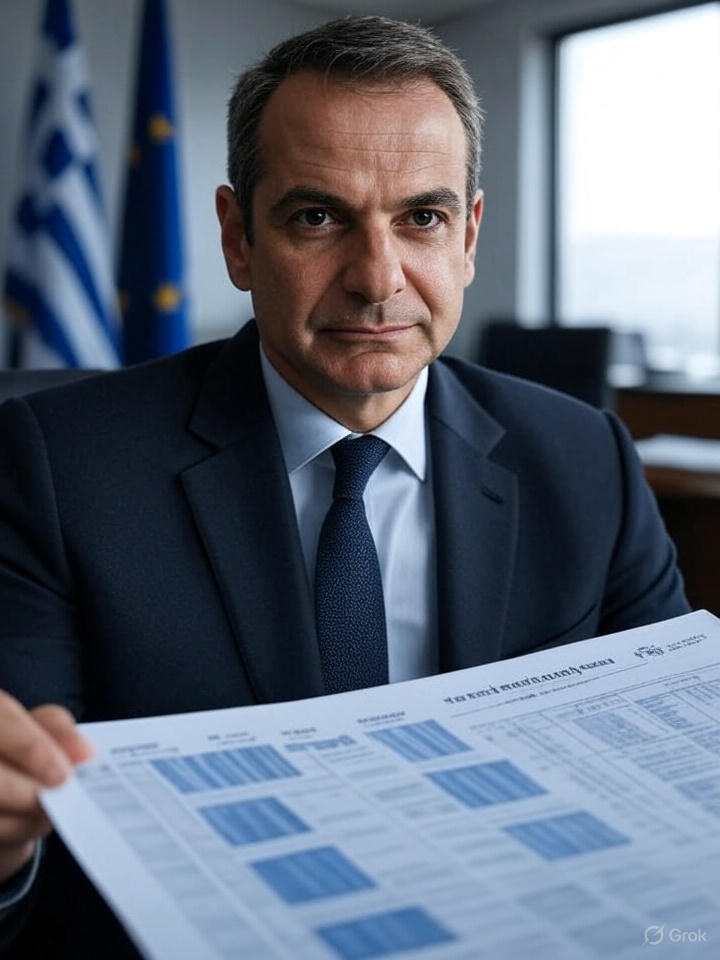As of September 11, 2025, Greece stands at a pivotal moment in its economic recovery, with a significant portion of its budget surplus being allocated to debt repayment. This strategic decision reflects the country’s ongoing efforts to reduce its substantial public debt, which remains one of the highest in the European Union. Approximately 50% of Greece’s primary surplus—a budget surplus excluding interest payments—is directed toward paying down its bailout-era loans and other obligations, a policy that underscores both fiscal discipline and the challenges of its financial past.
The Context of Greece’s Surplus
Greece has achieved notable fiscal progress in recent years, transitioning from chronic deficits to consistent primary surpluses. In 2024, the country recorded an impressive primary surplus of €11.4 billion (4.8% of GDP), exceeding its target of 2.1% of GDP. This surplus, driven by robust economic growth of 2.1% in 2024 and declining unemployment below 10%, has provided the government with a financial cushion to address its debt burden. The 2025 budget, set to be finalized this month, projects a continued surplus, bolstered by higher-than-expected tax revenues and tourism proceeds, a key pillar of the Greek economy.
The primary surplus is a critical metric for Greece, as it measures the government’s ability to generate revenue beyond operational expenses, excluding the hefty interest payments on its debt. With public debt still hovering around 147% of GDP in 2024—down from a peak of 207% in 2020—this surplus has become a vital tool for debt reduction.
Allocation to Debt Repayment
Under agreements with its European creditors, including the European Stability Mechanism (ESM) and the Eurogroup, Greece has committed to channeling a substantial share of its primary surplus toward repaying loans from the 2010-2015 bailouts, which totaled €280 billion. In 2025, approximately half of the projected surplus—estimated at €5-6 billion—will be allocated to early debt repayments. This follows a trend of accelerated repayments, with Greece planning to clear its first bailout loans by 2031, a decade ahead of the original 2041 schedule. The funds will be drawn from a €37 billion cash buffer, surplus revenues, and proceeds from new bond issues.
This 50% allocation is part of a broader strategy to lower the debt-to-GDP ratio, which is expected to fall to 135% by 2027. Recent actions, such as the €5 billion repayment in 2024 and a planned €5.3 billion repayment in 2025, demonstrate Greece’s intent to reduce reliance on external financing and regain market confidence. Finance Minister Kyriakos Pierrakakis has emphasized that this approach allows surplus funds to “reach society faster and more effectively” by reducing future interest burdens.
Economic and Social Implications
The decision to dedicate 50% of the surplus to debt repayment has sparked both praise and debate. Economists and international creditors, including the IMF, view it as a sign of fiscal responsibility, noting that it aligns with Greece’s commitment to maintain primary surpluses of 2-3.5% of GDP until at least 2022, with targets easing thereafter. The move has also lowered borrowing costs, with Greek 10-year bond yields dropping below Italy’s, reflecting improved investor sentiment.
However, this policy has drawn criticism domestically. With many Greeks still grappling with the aftermath of the 2009-2018 financial crisis—lower wages, high living costs, and a cost-of-living crisis—some argue that the surplus should be reinvested in public services like healthcare, education, and infrastructure. The government has countered with targeted relief measures, such as a €1.1 billion package in 2025 offering rent rebates and tax incentives, but these are seen as insufficient by opposition parties and labor unions, who demand a larger share for social spending.
A Balancing Act
Greece’s allocation of 50% of its surplus to debt repayment is a delicate balancing act between honoring international commitments and addressing domestic needs. While it has enabled early repayments—such as the €22 billion already cleared from the first bailout by 2024—it also highlights the lingering legacy of the debt crisis. As the country continues to grow, with GDP projected at 2% for 2025, the challenge will be to sustain surpluses while easing the burden on its citizens, ensuring that economic recovery benefits all.
This strategy, rooted in the post-bailout era’s fiscal discipline, positions Greece as a model of resilience, though it raises questions about the long-term trade-offs between debt reduction and social investment.
